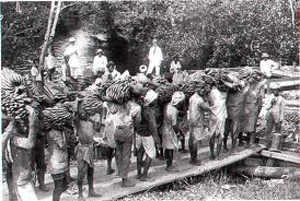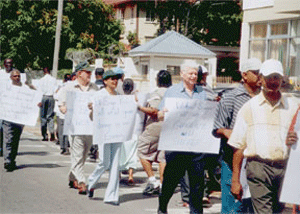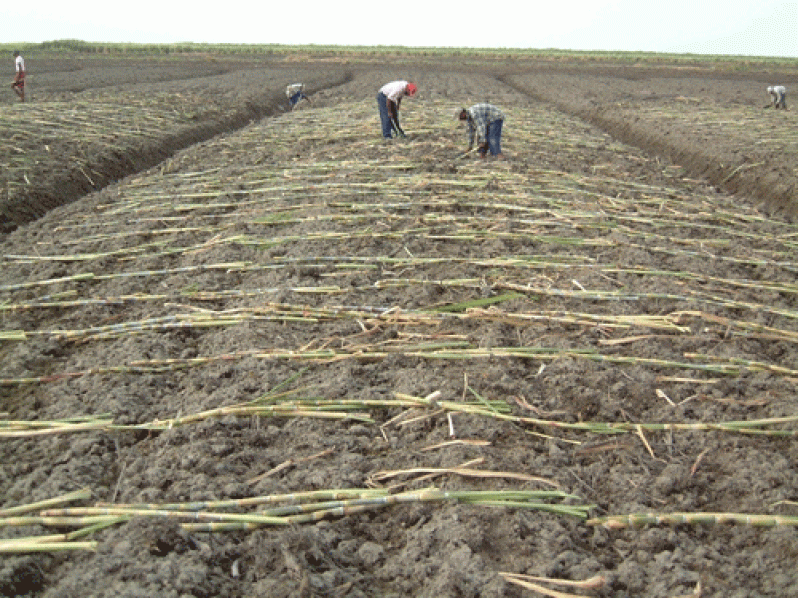The pulse of the nation’s economy
Sugar forms the mainstay of Guyana’s economy, and the story of sugar in Guyana interweaves this nation’s past, present and, indisputably, its future. The arrival of several races of the Guyanese nationhood is only because of the sugar industry of Guyana. Christopher Columbus sailed off the Guiana coast on his third voyage in 1498, with subsequent visits by Spanish explorers Alonzo de Ojeda and Juan de La Casa in l499, followed by Vincent Juan Pirizon in 1500 and, at the beginning of the sixteenth century, Amerigo Vespucci – a skilled geographer and navigator, after whom the Americas were named.
Sir Walter Raleigh of England also voyaged to the New World in l595, which gave rise to the legendary “El Dorado; but it was the Dutch who established the first European Settlement in 1580 on the banks of the Pomeroon River and, in l6l6 a trading post on the banks of the Essequibo River, from which they exported to Europe indigenous goods they bartered from the aboriginal tribes, mainly the Warraus (thought to have occupied these lands since before 900 AD), the Caribs and the Arawaks. However, in the early l650s, the Dutch extended their agricultural interests in the indigenous annatto and indigo to cultivating coffee and cotton, before their interests turned to sugar.
During the second half of the seventeenth century the Dutch began land reclamation on the coastal territories and their network of dams, kokers and drainage systems is the most impactful and, if efficiently maintained, enduring Dutch legacy on Guyana’s landscape. Agricultural activity was then shifted mainly to the coastal plains and, in order to achieve product availability in commercial quantities, the Dutch West India Company began to supply the colonists with African slaves.
Sugar cane cultivation began on and around the island of Kyk-Over-Al by the Dutch, who had first set up factories in Brazil, after having discovered the most effective way to extract, boil, and crystallize the juice of the cane.
The use of primitive mills, consisting of two wooden rollers turned by hand, gave way to efficient steel mills by l664. One of the earlier steel mills, which is still fully functional, is on display in Port Mourant near the entrance of GUYSUCO’s Training School.
By l769, Demerara had a total of 206 plantations and 5,907 slaves; Essequibo had 92 plantations and 3,986 slaves; and Berbice, the last county to be colonized, had only five estates with a number of trading posts up the Canje Creek.
Slavery abolished, indenture system introduced
l747 the Dutch had opened up the area near the Demerara River to British  immigrants. By l760 the British constituted a majority of the population of Demerara and war broke out between the Netherlands and Britain in l781, resulting in British occupation of the three counties. The Dutch allied with the French and regained control of the colonies a few months later, with the French being the predominant administrators. The Dutch regained power in l784 and the colonies changed hands several times before being finally conquered by the British in l803 and ceded formally by the Dutch to the British in l814. The British then unified the three counties into the colony of British Guiana in l831.
immigrants. By l760 the British constituted a majority of the population of Demerara and war broke out between the Netherlands and Britain in l781, resulting in British occupation of the three counties. The Dutch allied with the French and regained control of the colonies a few months later, with the French being the predominant administrators. The Dutch regained power in l784 and the colonies changed hands several times before being finally conquered by the British in l803 and ceded formally by the Dutch to the British in l814. The British then unified the three counties into the colony of British Guiana in l831.
The Abolition of Slavery Act was passed in Parliament on 29th August l833 and came into effect on 1st August 1834. A period of apprenticeship allowed the planters breathing space to find alternative sources of cheap labour.
The newly-freed slaves, showing indifference to field work, began an exodus from plantations in order to plant cash crops, which consequenced sugar exports falling by 30%.
The temperament of the indigenous population was not conducive to the discipline of plantation life and, after unsuccessfully trying in various ways to acquire cheap, docile, and agresic replacement labour from Madeira, China; and even free Africans, they arranged for the introduction of an indentured workforce from India.
On the 5th and 6th May 1838 the Whitby and the Hesperus landed 396 “bound coolies”, who were described as “a docile, quiet, orderly, and able-bodied people.”
Guyana Sugar Corporation
The Guyana Sugar Corporation (GuySuCo) was established in l976 when the Guyana Government nationalized and merged the sugar estates operated by Booker Sugar Estates Ltd and Jessels Holdings.
The Corporation is the largest single employer in Guyana, with a workforce of approximately 18,000 employees, with an estimated 120 families benefiting directly and indirectly from the industry.
Because of several negative variables impacting the industry, sugar currently accounts for approximately 6% of the GDP, which is a drop, mainly due to the EU price cuts and the subsequent re-structuring of the industry in efforts to retain some degree of viability. However, it still accounts for an approximate 40% of national agricultural production and is the largest earner of retained foreign exchange in Guyana.
The $16 billion in sugar levy, which was extracted by the previous regime to fund the Linden community, the Guyana National Service, the Public service, among others, constrained the re-capitalisation of the industry, which severely hampered the operational capacity of the sugar mills, some of which are centuries old and near-obsolete. It is to the credit of the employees of the industry that they have devised innovative measures to keep the factories running and producing.
Currently the Corporation’s operations are conducted on eight estates and seven factories along the coastal belt. These are Skeldon, Rose Hall, Albion/Port Mourant, and Blairmont in the county of Berbice; and Enmore, LBI, Uitvlugt/Leonora, and Wales in the county of Demerara.
GuySuCo’s 2010 Annual Report recorded earnings of $32 billion, which is projected to increase significantly with the enhanced productivity of the Skeldon sugar factory. Averaging 230,000 tonnes in recent years because of several inhibiting anomalies impacting the industry, the ultimate goal targeted when the Skeldon factory becomes fully operational and the stock productivity increases is 400 tonnes per annum, which will restore the sugar sector to its glory days and, consequently, increase worker emoluments and benefits.
Value-added products and packaging of Demerara Gold and other products are additional components to the recovery of the sector.
Considerable emphasis continues to be placed on proper management of the environment on sugar estates. Sustainable development is the watchword of Guysuco’s farming and production systems. In late March/early April of l995 a Canadian company, Ecologistics International Ltd, carried out an environmental audit of the industry under the aegis of the World Bank. Since then, several studies have been conducted on the various estates to ensure that operational methodology in the industry is in conformation with world standards of production. All the reports have thus far been favorable to the industry.
The modern Skeldon sugar factory
In 2004 it was announced that the Guyana government was moving to modernize its sugar industry to cushion the impact of the African, Caribbean and Pacific ACP countries on the world market. As part of a strategic plan to reduce costs and improve productivity, the Guyana Sugar Corporation and the China National Technology Import and Export Corporation (CNTIC) signed contracts on June 22, 2004 in Beijing. As a result of the $110 million agreement, which was partly funded by the World Bank, International Monetary Fund and the Exim Bank of China, a new factory was built, which included the Skeldon Sugar cogeneration plant, a distillery and a refinery to be constructed at a later stage in 2008.[The agreement was also made in compliance with the World Bank target and obligations to contribute to an overall reduction of global greenhouse gases and to introduce modern technologies to the sugar industry which would improve efficiency. In November 2007, sugar factory workers of GuySuCo were trained in South Africa to become familiar with the new technology. Teething pains have plagued the factory since it was commissioned. However, these problems are being addressed and sugar is once again on its way to becoming king in the agricultural sector in Guyana,.












